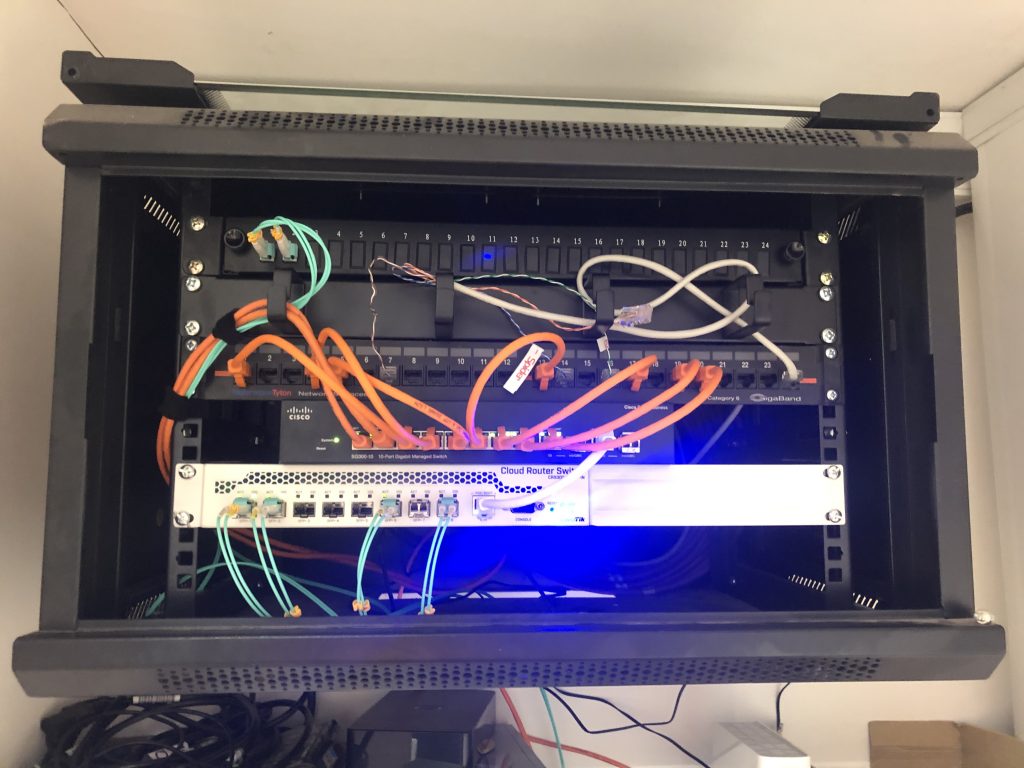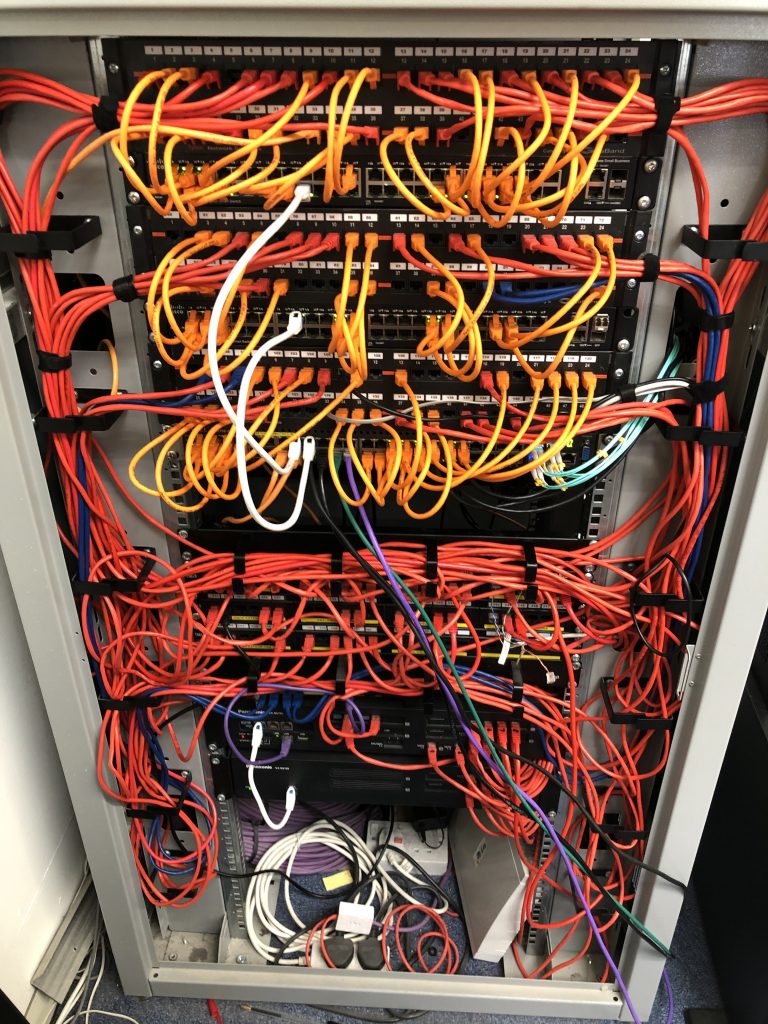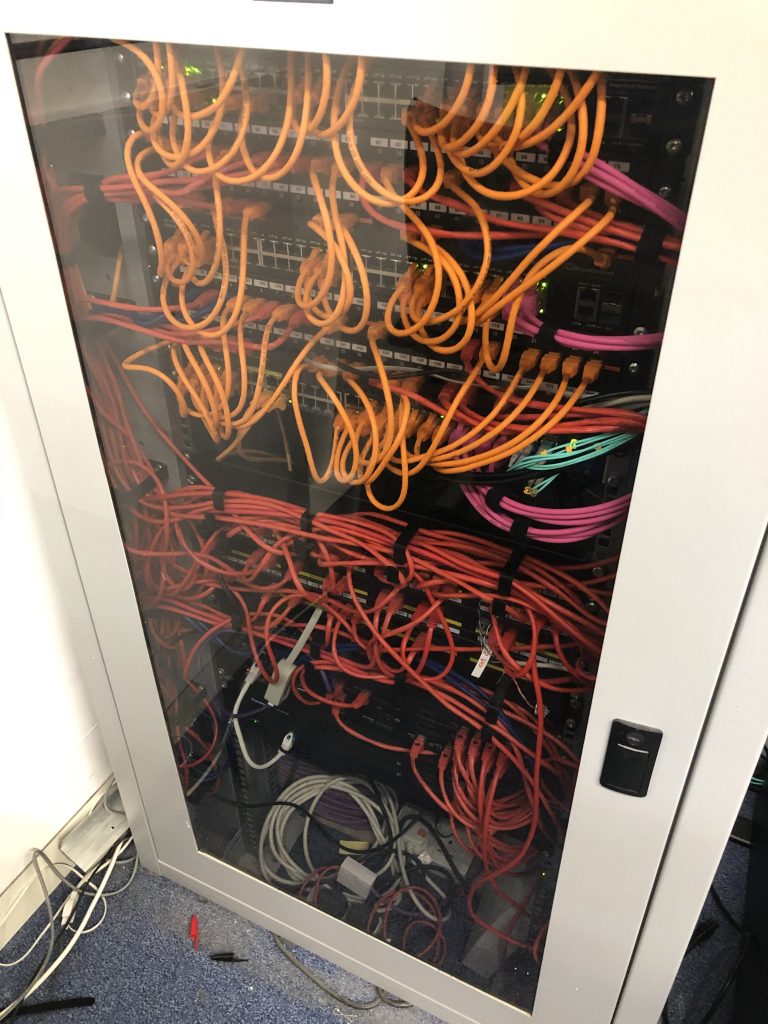AJT Case Study
Network Improvements
The Problems
Our new customer joined us with a number of problems left by their incumbent supplier. They were in need of network improvements. After a bad few months with lengthy downtime due to no preventative or proactive maintenance being carried out on their site, they suffered an avoidable hardware failure. The root cause was failure to apply an HPE Proliant service pack.
This took the incumbent over 10 days to resolve with HPE.
During the incumbents tenure one of the virtual hosts had unexplanably lost 64gb of RAM. This forced the virtual machines to be balanced very poorly. A single virtual host with just a single 1gb/s NIC had 2 Remote Desktop session hosts, a heavily used SQL server and the RD Gateway. This configuration was creating performance issues and SQL drop outs.
To create further issues there was a 1gb/s fibre joining the main network and one Virtual host to the other Virtual host. This made replicating and backups slow and was also the route all users had to take to access the domain controller and file server.
The Fix
We increased all uplinks from virtual hosts and between switches to 4x 1gb/s LAG. This solved the issue and enabled 100% of the workforce to work whether in the office or on the remote environment.
We installed 10gb/s switches on both sides of the contended 1gb/s fibre, installed 10gb/s cards in the servers and created a 20gb/s LAG as the network backbone. The existing LAN switching infrastructure was introduced back on to this backbone with 4gb/s LAG and max 1 hop.
We adopted the wireless into our cloud controller and re-configured to be secure, with a public and private SSID. Under the incumbents configuration, when visitors came onsite and joined the wireless, they were dropped right onto the corporate network.
We tidied up all comms cupboards in line with our standards.
For this piece of work we utilised Layer 2 and Layer 3 switches from Mikrotik and Zyxel
Untidy Network Cabinets
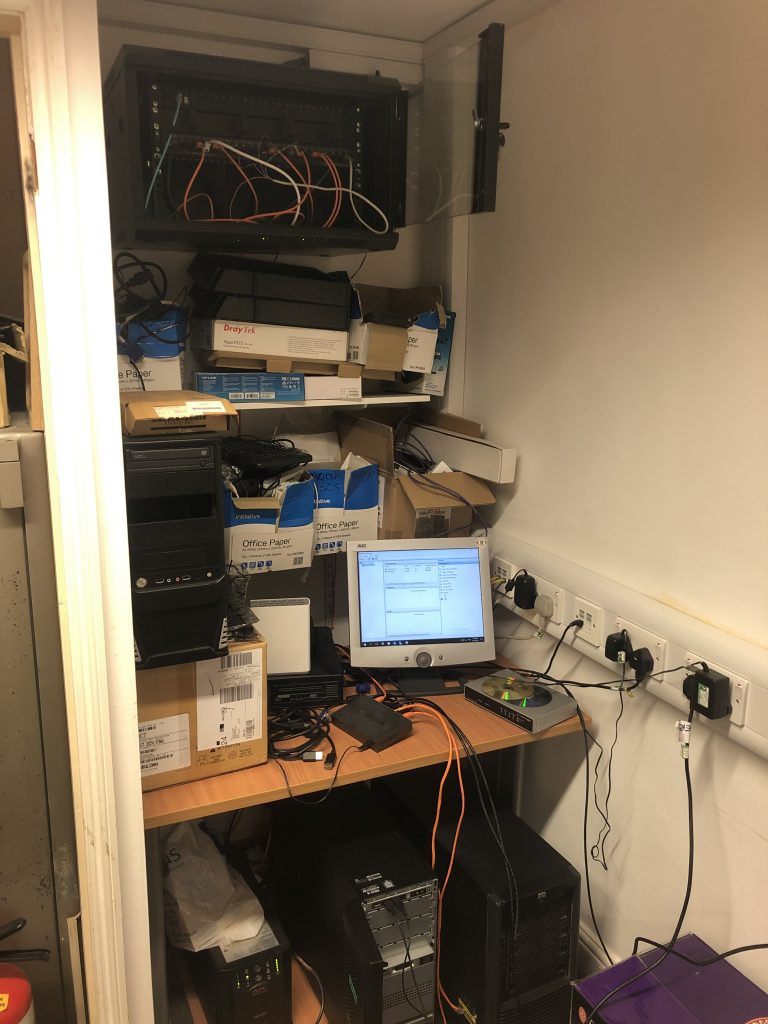
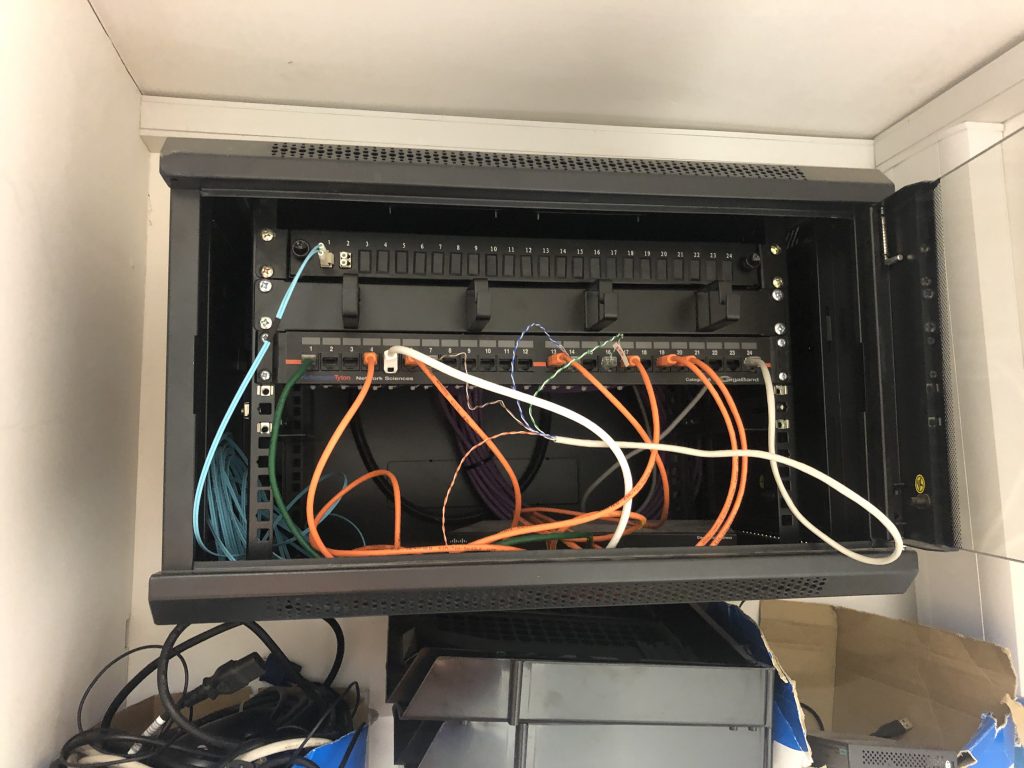

AJ Taylor Improved Network Cabinets

